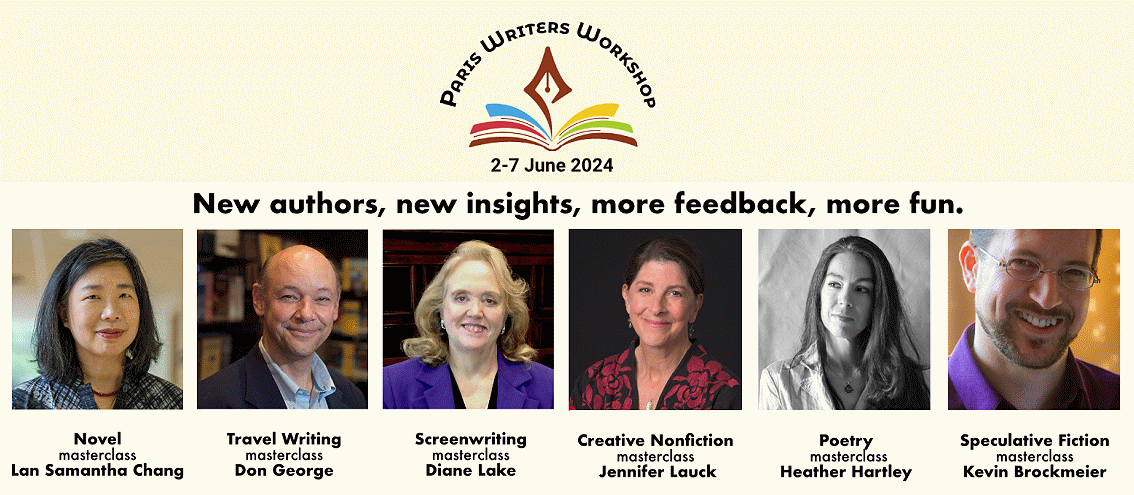
From Idea to Script to Sale





Before I get to today’s blog…
Thinking about doing more with your writing? Why not join me in Paris June 2-7 for my Masterclass in Screenwriting? Come be part of a dynamic community of writers and literary agents to learn, to write, to network, to energize your literary goals—and just to have fun in the City of Light!
The Paris Writers Workshop is the longest running literary program of its kind. This program offers 6 masterclasses by renowned authors, each a specialist in their field—and I’ll be teaching the Screenwriting Masterclass—in English, of course.
The workshop will be held at Columbia University’s beautiful Reid Hall campus in the heart of literary Paris—Montparnasse.
Registration is now open: https://wice-paris.org/paris-writers- workshop
We’ll have a great time getting your story ideas off the ground!!

True Stories 2: Citizen Kane
As we continue on our journey to look at the best way to tell ‘true’ stories, we might as well start with one of the best: Citizen Kane [1941] by… well, this is where it gets interesting.
Technically, the screenplay is by Herman J. Mankiewicz and Orson Welles. If you saw last year’s movie, Mank, you’ve seen a ‘version’ of the creation of that screenplay. We’ll talk more about Mank in a few weeks. But if you look at the credits for Citizen Kane, you’ll see Mankiewicz and Welles… but guess what? There were other writers involved.
An aside—this is often the case with films. The people whose names are listed on the credits are rarely the only writers. But the WGA [Writer’s Guild of America], who determines credits on all screenplays, allows only three writers or three writing teams to receive screen credit. But back when Citizen Kane was made, credits were often determined by the producers and the studios. Today, the WGA reads ALL the screenplays written for the film and 3 arbiters determine credit.
In the case of Citizen Kane, John Houseman, Roger Q. Denny and Mollie Kent also contributed to the screenplay. And this film is often lauded as the best film ever made.
What does it do that’s so special? Why, on IMDB, is the critic’s Metascore 100%?! And how is it in the ‘true’ story class?
This is a film that was ‘inspired’ by the life story of William Randolph Hearst, who created the Hearst newspaper chain. He also built the iconic Hearst Castle at San Simeon, with its own zoo, where he entertained Hollywood royalty and major figures of the day. He also had a relationship with Marion Davies, whom he worked very hard to make a star.
All of these ‘plot points’ figure into Citizen Kane, and as it was made 10 years before Hearst died, why didn’t he sue? Well, first of all, he was a public figure so his life’s events were pretty much fair game. But Welles changed the name of his main character to Charles Foster Kane, and right up front in the fake newsreel that begins the film, the narrator mentions how this story could have been about many similar moguls, and Hearst is one who is mentioned. So by mentioning Hearst, he clearly can’t be Kane, so Welles kind of covered his butt!
It's well known that the story followed many events of Hearst’s life, but made up the method by which the story was told—and it’s that method that’s interesting and has been used over and over again.
The film begins with Hearst’s death and the newsreel showing us who he was, and then goes to a group of reporters who are trying to figure out what Kane’s last word referred to—he said “rosebud” and then died. So the film takes us back through crucial points of his life in order to determine what the heck “rosebud” meant. Using this flashing back technique isn’t that uncommon when telling true stories—something to think about as you determine how to tell your true story.
A final thought on Citizen Kane. One thing that made it so great is that Welles had never made a motion picture before, the entire cast had never been in front of the camera—they were all theatre actors—and Welles did amazing things with the camera that simply hadn’t been done before. And it was all done on a super tight budget.
So, basically, Welles at the point he made Citizen Kane was just like most of us: no film directing credits, no relationships with ‘stars’ and no training in how to use a camera. But he had a vision and the talent to realize it.
Kind of gives hope to everyone making films on their iPhones today, doesn’t it?
See you next week when we’ll move from the 40s to the 50s to look at a couple of true stories that were on trend: Titanic [1953] and The Glenn Miller Story [1954].
Copyright © Diane Lake
12Jun22